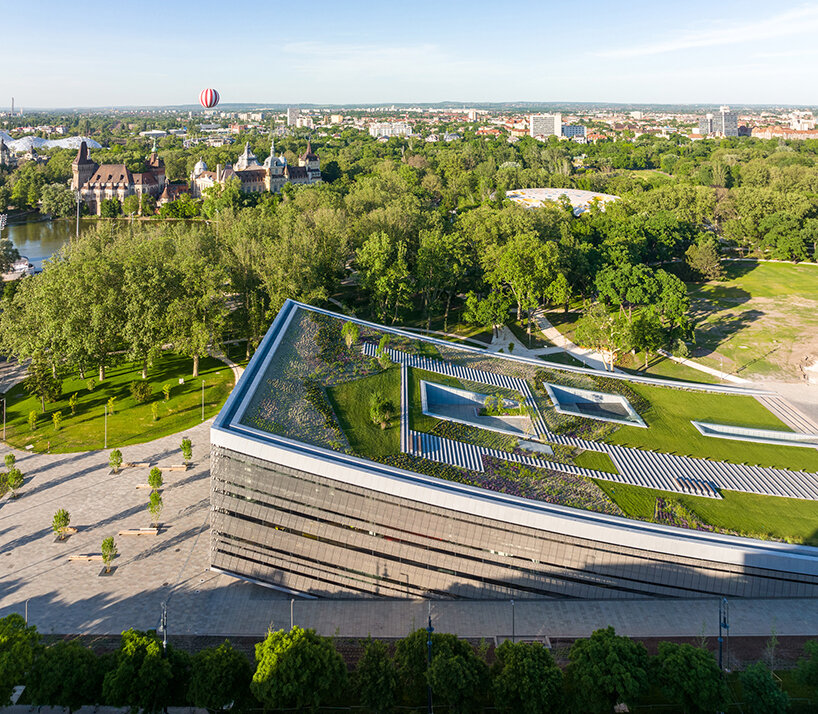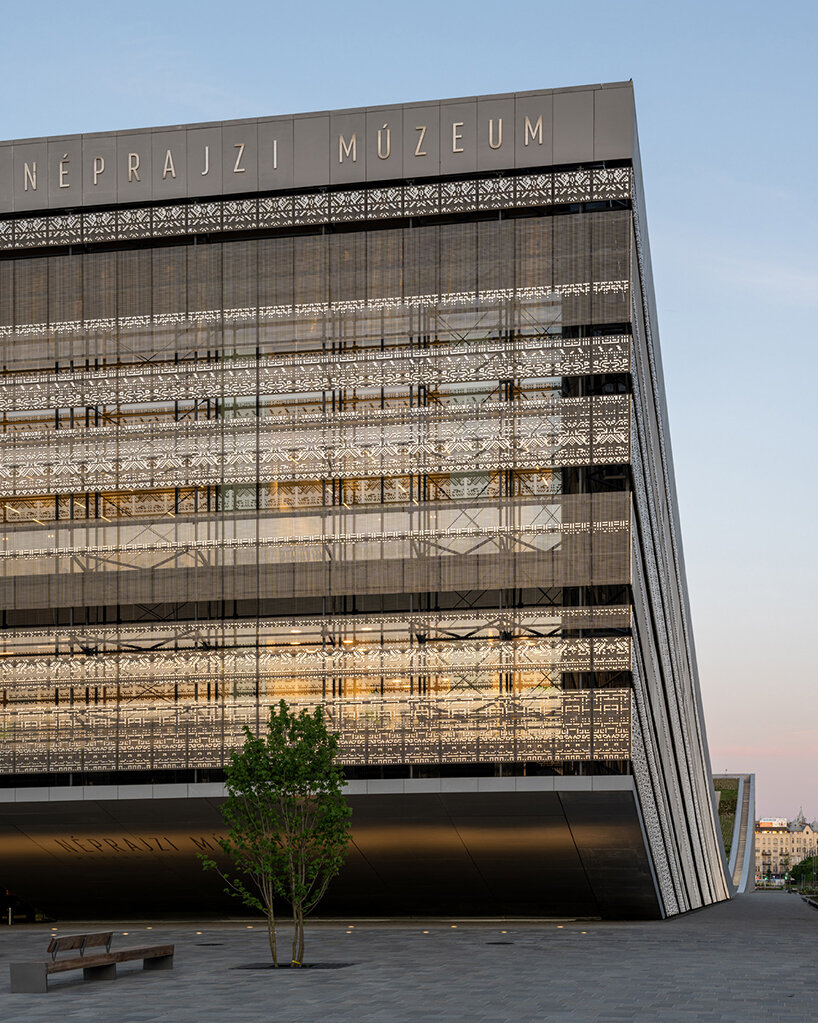the ‘museum of ethnography’ is built underground to expand a park in budapest
a curving volume emerges from budapest park
Napur Architects unveils its newly completed Museum of Ethnography, which rises among the historic streets of Budapest. Standing as part of the Liget Budapest Project (see here), Europe’s largest urban-cultural development, the work is defined by its curving gesture, a continuation of the surrounding park. With its landscaped rooftop and dramatic profile — at once dynamic and simple — the volume harmonized with the park environment and communicates with the urban context. The Városliget city park has long been a familiar venue for the Museum of Ethnography, the architects note that its collection debuted at this site at the 1896 Millennium Exhibition.
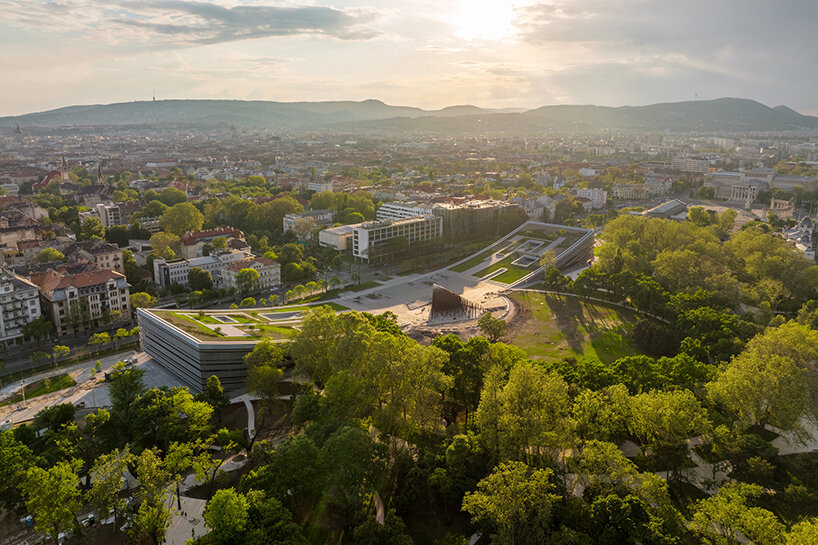 images © György Palkó | @gyorgypalko
images © György Palkó | @gyorgypalko
underground architecture in the city
Napur Architects’ Museum of Ethnography is the result of a winning competition entry selected above designs by renowned international firms including Zaha Hadid Architects and BIG. The Hungarian architecture studio (see more here) chose to respect the context of the city by embedding the majority of the exhibition space underground, rather than disrupting the historic urban fabric.
The architects elaborate: ‘Sixty percent of the structure is under ground level, and thanks to the landscaped roof and the transparency of the sections over the ground, the new museum is adapted to its environment in its scale too. The grass-covered roof area will be a pleasant community space awaiting visitors to Városliget.’
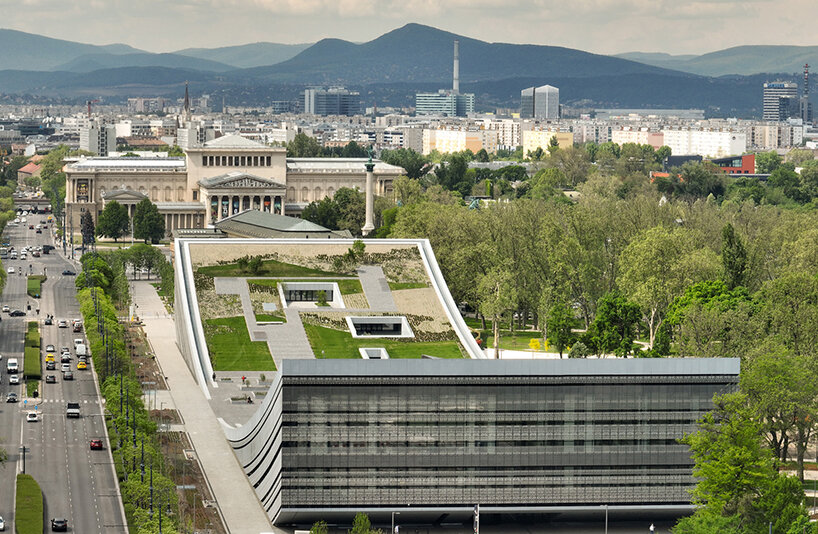
the pixelated facade
The trademark of the Budapest museum is its glass curtainwall which wraps the landscaped roof garden. While this element suggests a pair of natural, intertwined hillsides, its detailed facade is wholly contemporary — consisting of nearly half a million pixels, a raster made by metal grid based on ethnographic motifs selected from the museum’s Hungarian and international collections. The pixels were inserted into a laser-cut aluminum grid by a special robot, more than 2,000 of which are attached to the building. The small cubes were made up of 20 Hungarian and 20 international contemporary reinterpretations of ethnographic motifs.
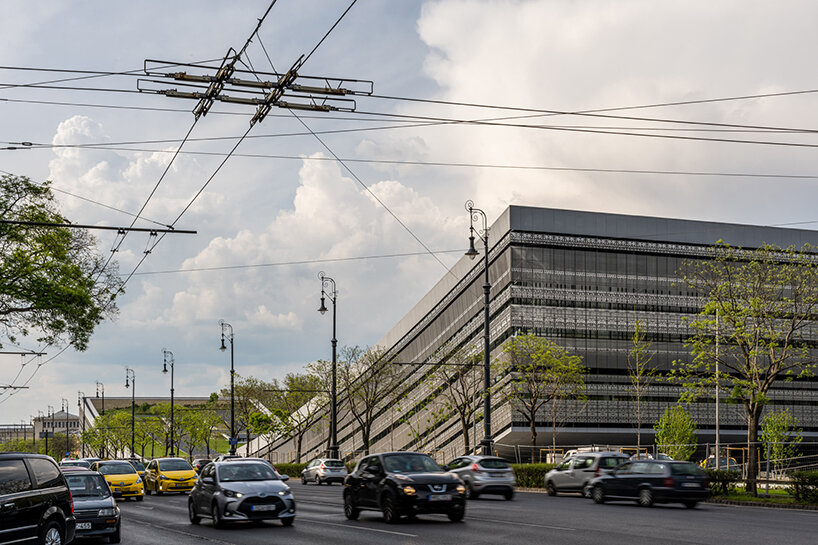
inside the museum of ethnography
The new functions and flexible spaces of the modern and state-of-the-art museum building will facilitate the understanding of the historical heritage embodied by the collection as well as the various aspects of contemporary society. Besides passing down this historical heritage, the realization of more recent professional and research themes and perspectives continues to be among the priority objectives of the museum, as confirmed by its mission.
The architects comment: ‘The creatively built spaces will open up new opportunities to communicate with visitors, enabling the presentation of the everyday objects, phenomena and ideas of the past and the present side by side.’
